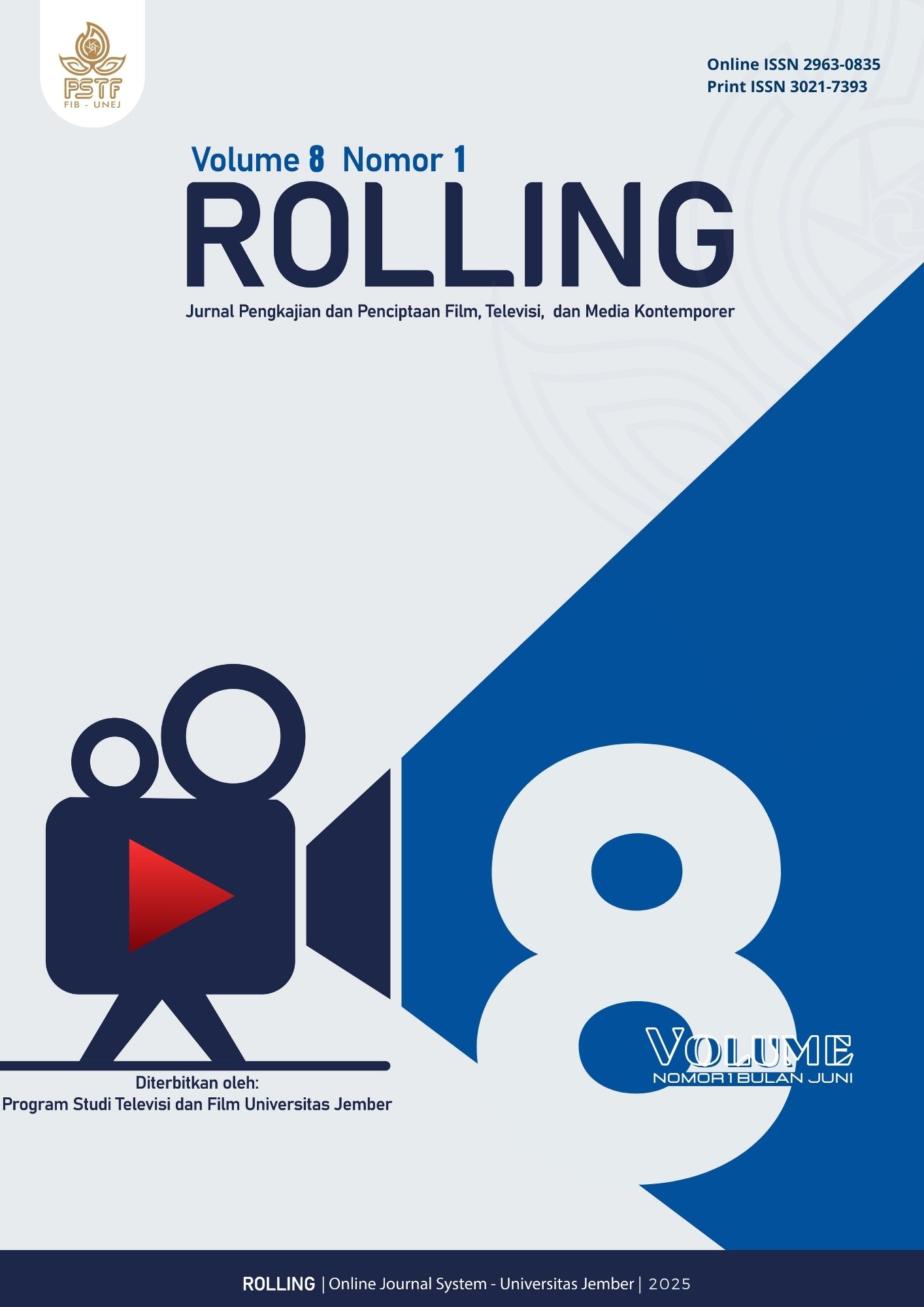Analisis Semiotika Roland Barthes: Visualisasi Kelas Sosial dalam Sinematografi Film The Handmaiden (2016)
DOI:
https://doi.org/10.19184/rolling.v8i1.53697Keywords:
Social class, cinematography, semiotics, Roland BarthesAbstract
The Handmaiden is an exotic-thriller film by Park Chan-wook which tells the story of Korean people who disguise themselves to deceive Japanese nobles. In the storyline regarding the fraud, there is a storyline that involves the issue of social class being an important thing in it. A social class is a group of people divided based on education, occupation, property ownership, and lifestyle. The purpose of this research is to show how social class is visualized in The Handmaiden film. The type of research used is qualitative research using Roland Barthes semiotic analysis method in film cinematography. The research focuses on how upper and lower social classes are visualized. The results show that the visualization of social classes is divided into 3 (three) categories. The first is visualisation of the upper social class who have power and lifestyle through clothing. Second, the visualisation of the lower social class that is highlighted very small in cinematography so that it represent the character as powerless or weak. Third, the representation of the lower social class that fights back by destroying the barrier between classes to save one of the upper-class characters.
Downloads
Downloads
Published
How to Cite
Issue
Section
License
Copyright (c) 2025 ROLLING

This work is licensed under a Creative Commons Attribution-NonCommercial 4.0 International License.
Permission Authors still has the right to duplicate, download and distribute of the published material as long as the author and source are cited. Any violation found in future of any copyright come in notice, then the author will be responsible for getting sanction in accordance with prevailing regulations.



